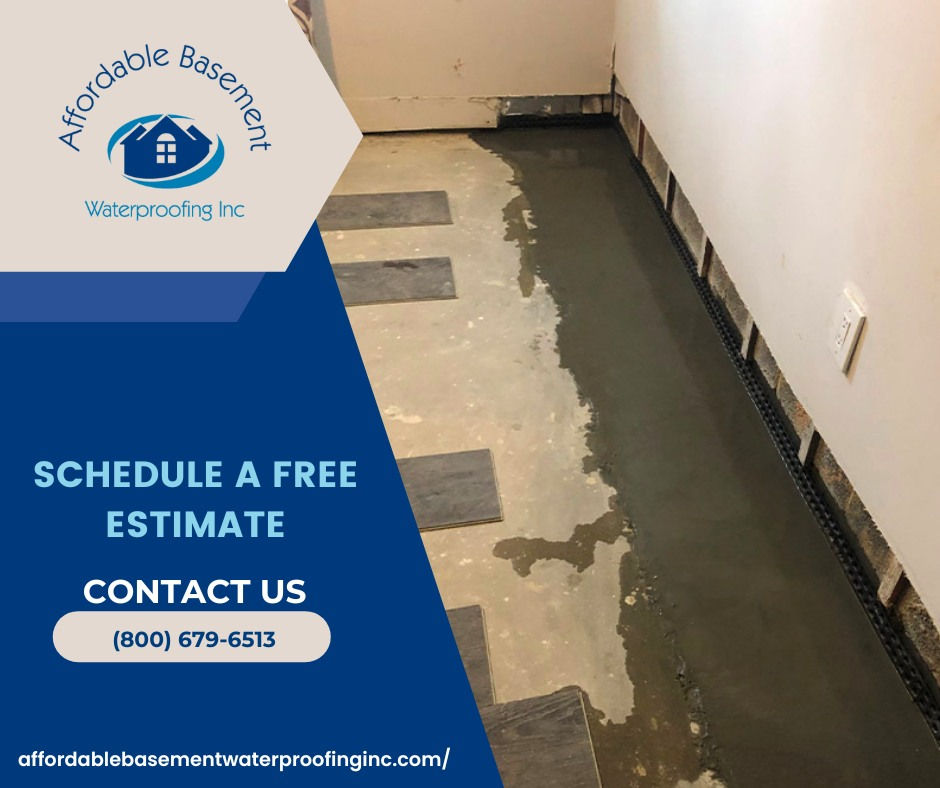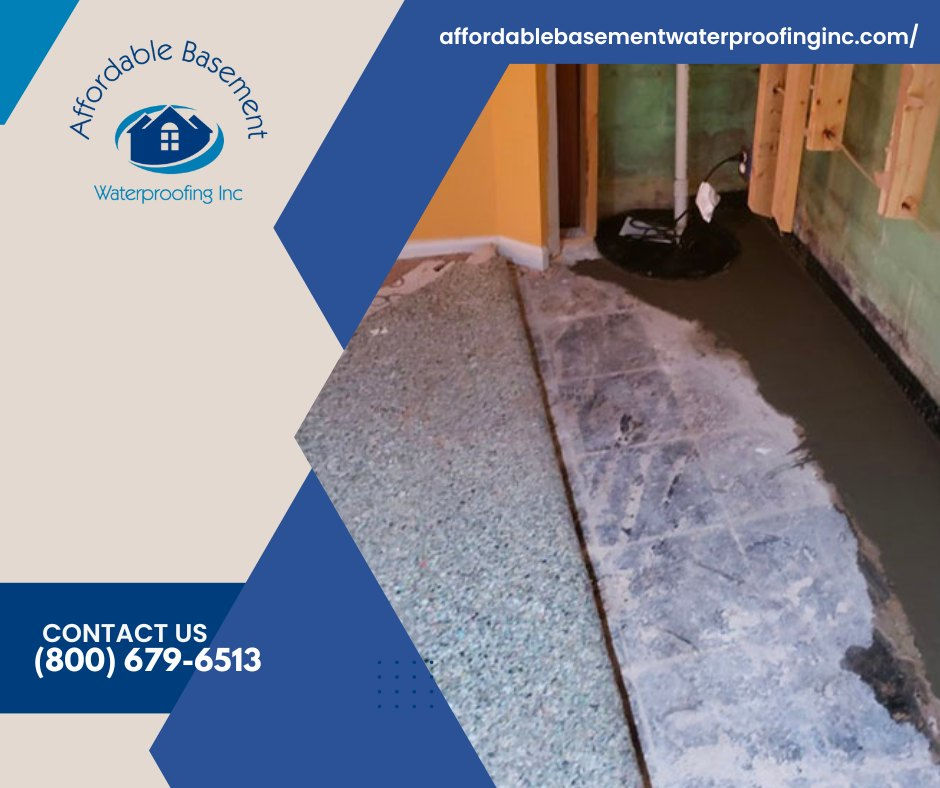The Ultimate Maintenance Checklist After Waterproofing Your Basement
- Skywalk Digital
- Aug 6
- 5 min read
All the people living in Maryland and the nearby areas are well aware of the importance of basement waterproofing. That is among the wisest decisions to protect your home’s integrity and long-term value. Have you already done waterproofing? Then you might be assured that your home is protected from water intrusion for a long time. However, this is a partial truth as, without proper maintenance, your basement will soon attract moisture, mold, mildew, and other signs of damage. Hence, follow-ups are very important in ensuring that your basement is dry and free of mold throughout the year.
The following is the final checklist for maintaining your basement area after the waterproofing. Every homeowner should follow these to protect their investment and ensure long-term performance.

1. Inspect Your Basement Regularly
Once basement waterproofing is done, don’t let it go without maintenance. You should look for it every month or two. Look for the common signs like:
New cracks in walls or floors
Water stains or damp spots
Peeling paint or efflorescence (white powdery residue)
Musty odors indicate hidden moisture
Finding minor issues early will help you avoid major damage and costly repairs.
2. Test the Sump Pump Quarterly
If your basement waterproofing in Baltimore included sump pump installation, regular testing is vital.
Here’s how to test it:
Pour a bucket of water into the sump pit.
Make sure the pump activates and drains water quickly.
Listen for unusual sounds or excessive vibration.
At least try to clean the sump pump and pit at least twice a year. Doing these prevents clogs or mechanical failure, especially before heavy rainfall seasons.
3. Clean and Maintain Gutters and Downspouts
You might invest a lot of time in inspecting the sum pump and looking for other signs of damage. One crucial thing that you might often miss is cleaning and maintaining gutters and downspouts. These must be in a functional condition to direct the water outside your home’s foundation.
Clean gutters at least twice a year (spring and fall).
Use downspout extenders to carry water 4-6 feet away from your home.
Check for blockages or leaks after major storms.
Evan, after basement waterproofing in Frederick, MD, several homeowners face water pooling. These issues might often be due to poor drainage. Proper gutter and downspout maintenance will help to get rid of such stressful situations.
4. Grade the Soil Around Your Foundation
The slope yard remains crucial to ensure the proper condition of your basement area. Therefore, it is necessary to check the slope of your yard, especially near your basement walls. The ground should slope away from your foundation to prevent water from collecting and seeping into the basement. The following are the effective tips:
Soil regrade (at least 6 inches over 10 feet)
Avoid piling mulch or landscaping materials (directly against the walls)
These are the key factors included in basement waterproofing Maryland strategies, especially for older homes.
5. Dehumidify Your Basement
In summer, it is common for the moisture level to rise. This can take a toll on your basement area. Even if you have done waterproofing, these issues might arise occasionally. A dehumidifier helps keep humidity levels between 30–50%. It discourages mold growth and keeps the space dry.
Tips:
Choose a unit with a built-in hygrometer.
Empty and clean the water collection tank regularly.
Check filters and replace as needed.
6. Seal Basement Windows and Window Wells
Do you have window wells? If these are not sealed properly, they can leave the basement at risk of moisture intrusion. Basement waterproofing and maintenance professionals suggest checking for cracks or damaged caulking around windows. These help to ensure preventive maintenance before the issue becomes severe.
Cleaning out debris from window wells every month is also necessary. Plus, installing clear acrylic window well covers for extra protection. Many basement waterproofing Baltimore experts recommend this step for homes near flood-prone zones.
7. Watch for Plumbing Leaks
The outside area of your basement is not always responsible for moisture issues. Internal leaks from pipes or appliances (like water heaters and washing machines) can also be the culprits sometimes. These, if not repaired on time, can damage your waterproofing system.
Here are a few preventive tips:
Insulate pipes to prevent condensation.
Check plumbing joints for slow drips.
Install a leak detection alarm for early warning.
8. Maintain Exterior Waterproofing Systems
In the case of exterior waterproofing, it is necessary to call professionals at least once a year for inspection purposes. They will recommend the necessary preventive tips.
Check for cracked or missing foundation sealants.
Ensure French drains or exterior drains are clear of sediment.
Watch for signs of soil erosion near the foundation.
These preventive measures are a vital part of basement waterproofing in Frederick, MD, areas where clay soil can expand and contract dramatically with weather changes.
9. Monitor for Pest Intrusion
A dry basement in your home not only protects your home from water intrusion. It also prevents pests. However, if cracks reopen or your sealant weakens, insects and rodents can still find a way in.
Seal small gaps and entry points immediately.
Use steel wool or caulk in hard-to-reach cracks.
Install door sweeps on basement doors.
10. Keep Waterproofing Records Handy
When you have done exterior or interior waterproofing, it is necessary to maintain detailed records. These records include work completed, warranties, and maintenance tasks you've done. If there is any issue even after the waterproofing, or if you plan to sell your house, these documents can prove to be valuable.
Note the contractor’s contact information.
Include dates of inspections or maintenance.
Store receipts and warranty documents safely.

Final Words
So, waterproofing is the first step to protect your home from water intrusion, especially if you live in Maryland. Also, you will require ongoing maintenance to strengthen your foundation. By following this checklist, you’ll reduce the risk of future water damage, maintain indoor air quality, and enjoy peace of mind, no matter what the weather brings.
Also Read This Blog - Waterproofing Basement in Baltimore Homes- Why You Shouldn't Ignore It?
If you are looking for waterproofing experts for basement maintenance or other needs, count on us at Affordable Basement Waterproofing Inc. We have long been offering services throughout Maryland. Get in touch with us right away to schedule a service or get an estimate for our services.
FAQs
1. How often am I supposed to check the basement after waterproofing?
It is advisable to check your basement once a month. You should look for any new cracks, water stains, or mold.
2. How often should I check the sump pump?
Yes, you should test your sump pump 3 times a year to make sure it is working properly. It is especially important in a place such as Baltimore, which gets a lot of rain.
3. Is it possible that clogged gutters can impact my basement, which is waterproof?
Clogged gutters can lead to water pooling around the foundation, which poses a threat of structural damage to the basement.
4. Should I use dehumidifiers after waterproofing?
Yes, a dehumidifier assists in controlling humidity and avoiding the formation of mold after professional basement waterproofing.
5. What can I do to detect a musty smell once again?
Mold and moisture may be present in an area with a musty smell. Redo the seals, your sump, and call your basement waterproofing Baltimore contractor.
6. Are there any chances of pests even after waterproofing?
Yes. The pests can also be attracted by the cracks and gaps. The entry points are also supposed to be sealed. It ensures full protection from pests.
.png)



Comments